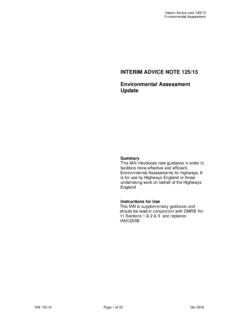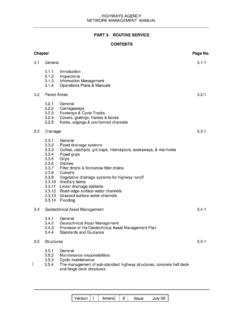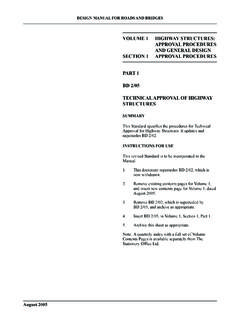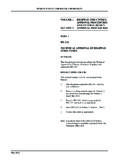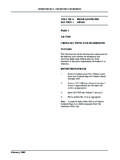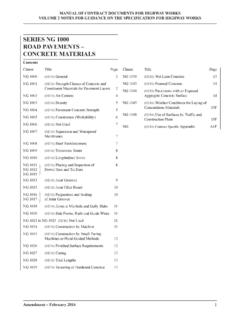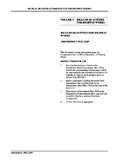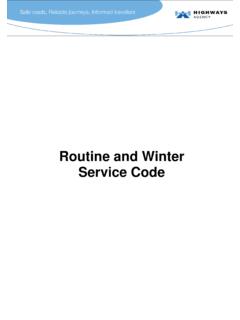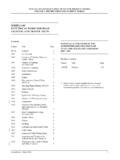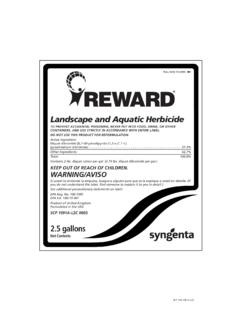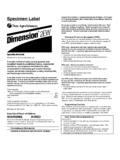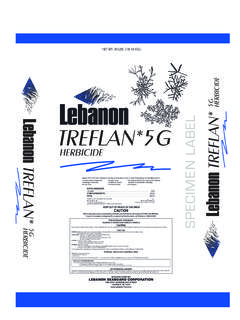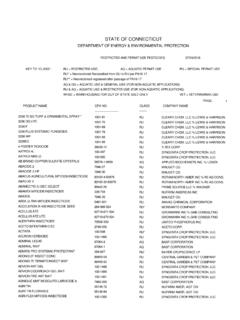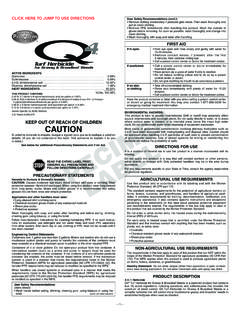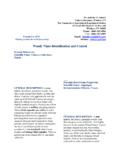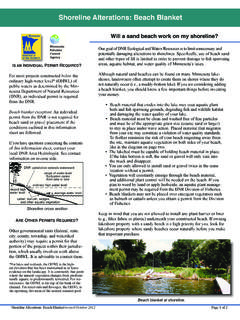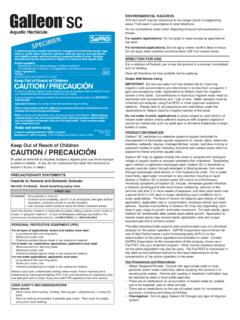Transcription of SERIES NG 3000 (05/01) laNdScapE aNd EcoloGy
1 SERIES NG 3000 (05/01) laNdScapE aNd EcoloGycontentsClause Title Page NG 3001 General 2NG 3002 Weed Control 2NG 3003 Control of Rabbits and Deer 3NG 3004 Ground Preparation 3NG 3005 Grass Seeding, Wildflower Seeding and Turfing 4NG 3006 Planting 5NG 3007 Grass, Bulbs and Wildflower Maintenance 7NG 3008 Watering 7NG 3009 Establishment Maintenance for Planting 8NG 3010 Maintenance of Established Trees and Shrubs 8NG 3011 Management of Waterbodies 10NG 3012 Special Ecological Measures 10NG Sample Appendices A1 MaNUal oF coNTRacT docUMENTS FoR HIGHWay WoRKS VolUME 2 NoTES FoR GUIdaNcE oN THE SpEcIFIcaTIoN FoR HIGHWay WoRKSA mendment - May 2008 1 Volume 2 SERIES NG 3000 Notes for Guidance on the Specification for Highway Works laNdScapE and EcologylaNdScapE aNd EcoloGyNG 3001 General1 The purpose of
2 Clause 3001 is:(i) (05/06) to set out communication requirements between the Contractor and Overseeing Organisation which are particular to the laNdScapE works (sub-Clauses , & );(ii) to state a general prohibition on the use of imported peat. Imported peat may be required under special circumstances, eg, for areas of habitat creation, or may be permitted as a constituent of recycled materials, eg, mushroom compost;(iii) (05/06) to state the conditions for the use of pesticides. Sub-Clause ensures that all legislation and codes in force during the currency of the Contract are (05/08) The compiler should state the location and extent of any nature conservation site which could be affected by the Works, for example, Site of Special Scientific Interest, Special Area for Conservation, Special Protection Area, RAMSAR Site, Site of Interest for Nature Conservation, Local Biodiversity Action Plan, HABAP area or the location of a protected species or its roost or refuge.
3 The compiler should also state the location and extent of any archaeological site which could be affected by the Works, for example, by subsoil treatment or The Contractor should be responsible for liaison with other landowners, as described in Appendix 30/1, when carrying out off Site planting, maintenance of off Site planting or maintenance of boundary The main bird nesting season is generally considered to be from the end of March until the end of July. Advice on the bird nesting season for the area in which the Contract is located should be sought 3002 Weed control1 This Clause describes the weedkilling regimes which may be applied to areas throughout the duration of both construction and maintenance contracts.
4 It is the responsibility of the occupier to control injurious weeds on his Appendix 30/2 should state the areas to which the various methods of weed control described in this Clause are to be applied. Detailed descriptions may not be necessary in all cases, for example, for paved areas and hardstandings (sub-Clause ). Detailed descriptions are more likely to be required to identify, for example, particular areas of grassland where selective weed control or hand-weeding are It may only be possible to specify some weed control requirements for a contract of up to three years duration.
5 Over longer contract periods it is likely that changes in wildflower distribution or the invasion of new nuisance weeds may necessitate the modification of the areas. A note to this effect may be included in Appendix 30 Sub-Clause may be invoked if herbicides are to be used:(i) to control vegetation on the sides of ditches or margins of watercourses, which may be impeding access or contain injurious species;(ii) to control emergent vegetation, eg, reeds and rushes, which have invaded watercourses to such an extent that they are impeding flow or are reducing the capacity of stormwater balancing ponds.
6 (iii) to control aquatic vegetation that may be impeding flow, eg, algae or Canadian Herbicides should not be applied to newly-sown grass until it is well-established. When sub-Clause is invoked for new grass areas an appropriate delay (which may be 4 to 6 months, depending on season of sowing) should be allowed when completing the timing of application under Appendix 30 (05/08) Spot treatments with herbicide or handweeding should be specified for the control of weeds such as Common Ragwort (Senecio jacobaea) in areas with dense populations of desirable broad-leaved species where a spray herbicide cannot be applied.
7 To be most effective, spot treatment of Common Ragwort (Senecio jacobaea) should be carried out when the plants are actively growing but still at rosette stage, from mid-April to the end of May. Guidance on when it is appropriate to control Common Ragwort is given in Code of Practice on how to Prevent the Spread of Ragwort - May 2008 2 Volume 2 SERIES NG 3000 Notes for Guidance on the Specification for Highway Works laNdScapE and Ecology7 (11/04) When specifying control measures for weeds which are exceptionally difficult to eradicate, reference should be made to advisory publications from the Department for Environment, Food and Rural Affairs (DEFRA).
8 Other helpful publications include Model Specification for Control of Japanese Knotweed and Arboriculture Research Note 150/00 Japanese Knotweed in Amenity Areas . Eradication by a combination of cutting and herbicide may be specified by invoking several sub-Clauses of Clause 3002 Attention must be given to the timing of herbicide operations in relation to letting of the Contract. Many herbicides are not effective when plant growth is slow due to cold weather or during the dormant 3003 control of Rabbits and deer1 The control measures for rabbits are intended to be invoked under three circumstances:(i) To prevent the establishment of rabbit warrens on road construction sites, as they can threaten the stability of earthworks.
9 The rabbits may also constitute a nuisance to adjoining landowners.(ii) To prevent the establishment of rabbit warrens on existing roadsides, for the reasons given above and because rabbits can create a driver avoidance safety hazard.(iii) To prevent damage to newly planted trees and shrubs by rabbit colonies established within fenced planting The control of deer as a safety hazard on existing roads is effected by exclusion fencing (see SERIES 300).3 There is no provision for rabbit control to be stated as an overall standing requirement in a Contract because the need may arise at any time during the Contract period as a result of migration onto the Clearing and maintaining clear all planting areas enclosed by rabbit or deer fencing of the animals which these fences are intended to exclude (sub-Clauses to ) is imposed as an invariable obligation on the Contractor erecting such fencing or any subsequent Contractor taking on the fencing maintenance.
10 SERIES 300 deals with the specification of The clearance of deer within a fenced planting enclosure would be carried out by pursuit of the animals before the fencing is finally The requirement for the replacement of plants damaged by the animals for which exclusion or protection measures are in place under the Contract Amendment - May 2008 3(sub-Clause ) is necessary. However, it should be noted that serious damage to young woody plants can also be caused by other mammals for which there is no satisfactory defence, for example, voles (which may be harboured under sheet mulches) and squirrels.
